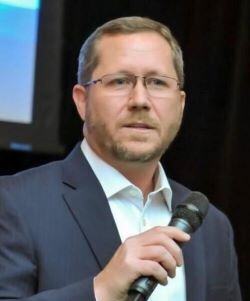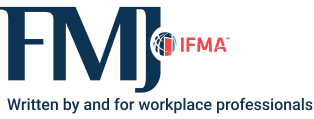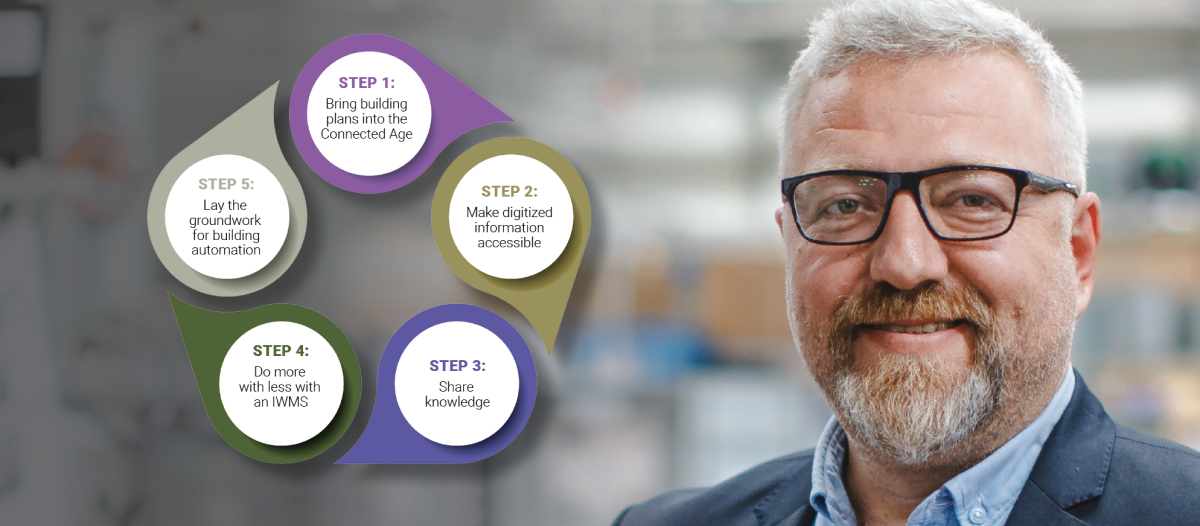A Critical Challenge
Developing the next-gen FM workforce

As experienced facility managers retire and take their institutional knowledge with them, the industry faces a skills gap that hinders its ability to keep pace with the changing demands of modern buildings. Without adequately trained facility managers, the comfort, safety and health of building occupants could be at risk. Building owners could also face a growing risk of building performance deterioration and increased deferred maintenance costs. Yet, despite these risks, the FM skills gap remains unresolved in many areas.
This gap has been growing for decades, presenting an increasingly critical supply chain challenge that remains unresolved. Over time, expectations of occupants in how they engage with their spaces have evolved, along with their desires for swift issue resolution and proactive problem prevention. Unless organizations can effectively reconcile these shifting expectations with the shortage of skilled resources, FMs will encounter difficulties in consistently delivering the desired user experience between occupants and the facility. This challenge becomes particularly pronounced due to the rapid advancements in technology and innovation, rendering traditional maintenance and operations strategies outdated while offering advantages to those who embrace change.
So, what is the solution? It lies in a combination of two key approaches: reimagining work to make it more appealing and transforming the approach to workforce development programs. However, it is important to recognize that implementing these approaches is not as simple as discussing them. The first step is understanding that any business, including FM, can undertake this process and follow the roadmap to success, although it may require effort and dedication to execute effectively.
Recruiting newly trained professionals
In no uncertain terms, staying ahead of the skills gap curve is imperative for companies, and it starts with integrating recruitment strategies right from the outset. New talent needs a clear pathway to enter the skilled workforce. A vital solution lies in forging strategic partnerships with local and regional educational institutions. These partnerships have now become essential in effectively addressing the issue. By focusing on establishing internship programs or apprenticeships for students, companies can empower these aspiring team members to gain a valuable edge through hands-on experience in their chosen fields. Connecting with educational or vocational organizations means that a company can help aspiring workers realize their full career potential through vocational training while also being able to tap into this newly trained workforce.
Adding a generous amount of mentorship from team members to these students significantly enhances their chances of success within the team. Mentors and experienced leaders in the field, well-versed in both older and newer technological advancements, serve as valuable guides for early career workers. By sharing their expertise with colleagues equipped with system training and software proficiency, they strengthen the workforce. This stage facilitates the connection of vital system dynamics, which demand specialized skills for precise maintenance, such as visualizations or power analytics.
Referrals matter and are typically underleveraged. By increasing referral bonuses for frontline technical positions, businesses can reinforce the message that these positions are highly valued and use the networks of their peers to build the business up. The work itself can also be redesigned by investing in readily available analytics software that has in-depth insights. These insights can help early career skilled workers by equipping them with advanced knowledge and troubleshooting direction. By leveraging the technology already here, businesses can bridge the skills gap and create a more supportive environment for newly trained professionals.
Lastly, connecting the work to a greater purpose can help recruit newly trained professionals looking for more than just a paycheck. Fighting climate change matters deeply to Gen Z, and a survey from Deloitte found that 77 percent of Gen Z respondents said it was important to work at organizations whose values aligned with theirs. As buildings account for 40 percent of carbon emissions, highlighting the impact skilled workers can have on reducing carbon emissions can make the work more attractive to prospective candidates.
Investing in high-quality education
Many building management systems (BMS) are equipped with centralized interfaces and automated software that make usage of it as simple as possible. However, these systems still require IT talent to maximize their capabilities. The 2021 Energy Outlook Report found that 40 percent of recruiters attribute the ongoing skills shortage in the energy industry to insufficient education and training. To close the skills gap, organizations must take a proactive approach to the training and development of their FMs.
Training programs can help companies upskill the talent they have. Building owners can provide access to online courses and training programs to help FMs stay current on the latest trends and best practices. For example, building owners can support facility managers in obtaining professional certifications by covering the cost of exams and training materials.
Encouraging the attendance of industry events online or in person can also help FMs network and collaborate with peers to share knowledge and insights. FMs can also gain practical experience through on-the-job training programs, such as shadowing more experienced colleagues. Investing in education and training programs can help FMs stay current on the latest trends and best practices, as well as gain practical experience in implementing the newest technology in their buildings.
Embracing automation and AI
A simple yet effective tactic is to automate mundane tasks whenever possible, not only improving the quality of the work but also delivering cost savings for facility executives. An illustrative example is automating data collection and utilizing analytics platforms to generate actionable insights. From the perspective of skilled workers, this simple step removes monotonous tasks from their daily routines and equips them with the necessary information to proactively address issues before they escalate. For early career skilled workers, leveraging analytics and artificial intelligence serves as a valuable bridge in their quest for knowledge acquisition, enhancing their confidence in fulfilling their work responsibilities.
Taking this a step further, envisioning AI platforms that report on outcome impact metrics, such as carbon reduction, patient satisfaction or student engagement, can provide skilled workers with a deeper understanding of their role in meaningful outcomes. For instance, in the realm of BMS, it becomes even more crucial to help skilled workers grasp that they are not solely optimizing the performance of a chilled water plant; they are actively contributing to carbon emissions reduction and playing a significant part in preserving the planet.
Considering a co-sourcing approach
Building owners can also consider taking a collaborative co-sourcing approach to building management. This brings together an outside resource provider to work with existing FMs to supplement any skills or competencies that are not readily available in-house. Co-sourcing can help streamline processes and improve efficiency by leveraging the strengths of both internal and external resources to accomplish projects more effectively.
Joint planning through co-sourcing can help FMs meet their energy and sustainability objectives by having an outside provider help to create a workable strategy to accomplish them. The external providers can help meet resource needs for short-term tactical projects or longer-term strategies for the facility. Co-sourcing can provide access to specialized resources and technologies they may not have in-house, such as cutting-edge energy-efficient systems.
Ultimately, modernizing the industry with sustainability technology is essential to closing the skills gap and ensuring FMs have the skills they need to meet future challenges. This includes investing in education and training, adopting new technologies and workflows, and involving outside experts when helpful. By doing so, companies can ensure that their buildings are efficient and sustainable while also prioritizing occupant safety and comfort.

References
bbc.com/worklife/article/20220225-how-climate-change-is-re-shaping-the-way-gen-z-works
www2.deloitte.com/us/en/pages/consumer-business/articles/understanding-generation-z-in-the-workplace.html
usgbc.org/articles/how-green-buildings-can-help-fight-climate-change
brunel.net/en/blog/business-growth/energy-skills-shortage
Read more on Training , Career Advancement and Emerging Topics
Explore All FMJ Topics









